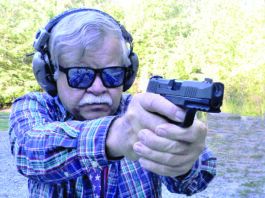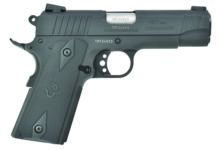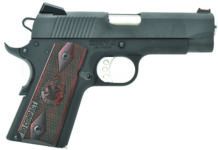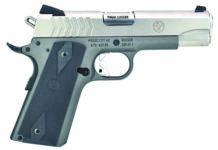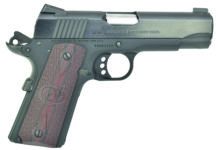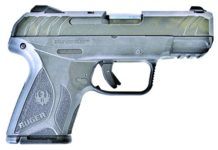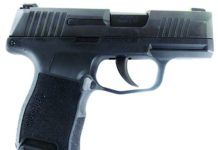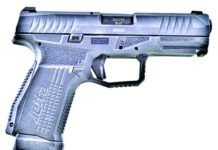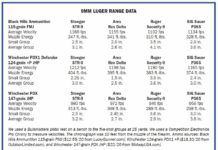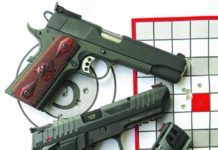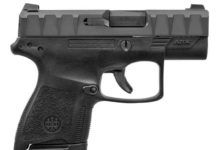Taurus 1911 Commander 1-191101COM-9MM 9mm Luger
GUN TESTS GRADE: B-$470The Taurus 1911 Commander is finished in a simple, matte black with contrasting controls. The hammer, grip safety, thumb safety, slide...
Springfield Armory Range Officer LW Compact PI9125L 9mm Luger
GUN TESTS GRADE: B+ (BEST BUY)$730Besides Colt, the 1911 competition market has been well supported and well served by Springfield Armory. The company offers...
Ruger SR1911 LW Commander Stainless 06722 9mm Luger
GUN TESTS GRADE: A (OUR PICK)$775Ruger introduced the SR 1911 in 2011 and has since added many calibers and variants to that product line....
Colt Lightweight Commander 9mm 04842XE 9mm Luger
GUN TESTS GRADE: C$895The Colt 1911 pistol has a very storied past and the history on this particular model is no different. In 1951...
Ruger Security-9 Compact Model 3818 9mm Luger
GUN TESTS GRADE: B
$309
This 9mm handgun isn't the typical polymer-frame striker-fired handgun. The Security-9 is a hammer-fired handgun. The system is similar to the...
Stoeger Industries STR-9 31721 9mm Luger
GUN TESTS GRADE: B
$350
This was a recent price at ImpactGuns.com. We found this handgun for retail in a local shop for $340. Interestingly, Stoeger...
SIG P365 Nitron Micro-Compact 365-9-BXR3 9mm Luger
GUN TESTS GRADE: B
$465
The P365 is the priciest pistol tested. Yet we routinely see these pistols at shops marked up over $500, and used...
Arex Rex Delta REXDELTA01 9mm Luger
GUN TESTS GRADE: A (BEST BUY)
$425
This was a recent price at ClassicFirearms.com. When you look at the extra $85 for the Arex Delta over...
Four New 9mm Pistols from Stoeger, Arex, Ruger, and SIG
Finally, we get a SIG Sauer P365 to the range, and it's okay. Just okay? Yeah. The others were the Stoeger STR-9, Arex Rex Delta, and Ruger Security-9, one of which we consider to be a better buy.
Competition-Ready 9mms from Springfield, Walther, and Arex
All three handguns offer great accuracy, good triggers, and manageable recoil. Choosing between them will be the customer's task because each one has positives suitable for different games.
Slim-Line 9mm Contest: Ruger, Beretta, and Bond Arms
The brand-new Bond Arms Bullpup handgun design takes on two veterans of the carry wars, the APX Carry from Beretta and a spiffed-up LC9s from Ruger. We found two really good compact choices.
9mm Slimline Pistol Shootout: New Glocks & Mossberg Vie
The growth of the concealable 9mm Luger handgun market continues to grow apace, with seemingly dozens of new models being introduced every year from...





























